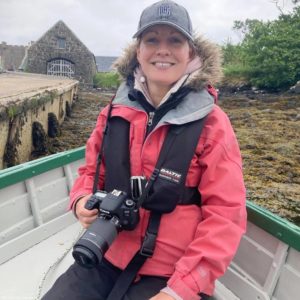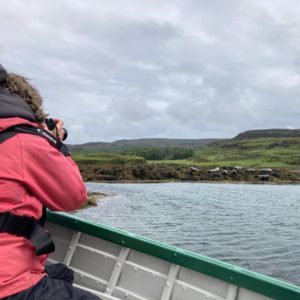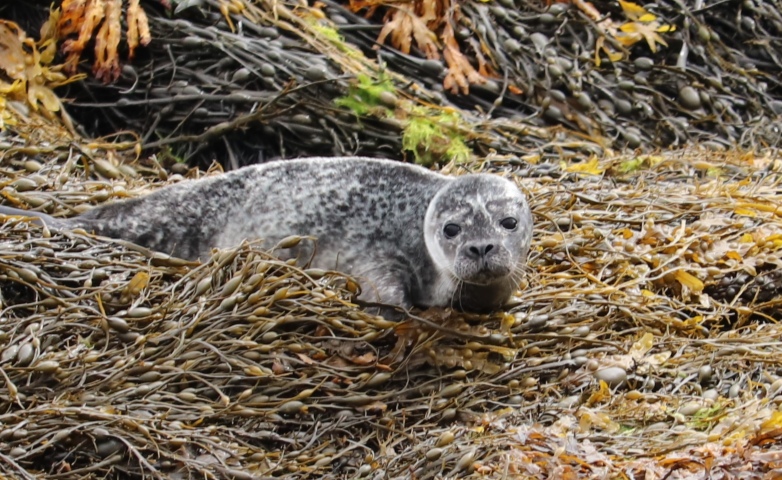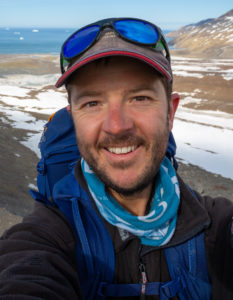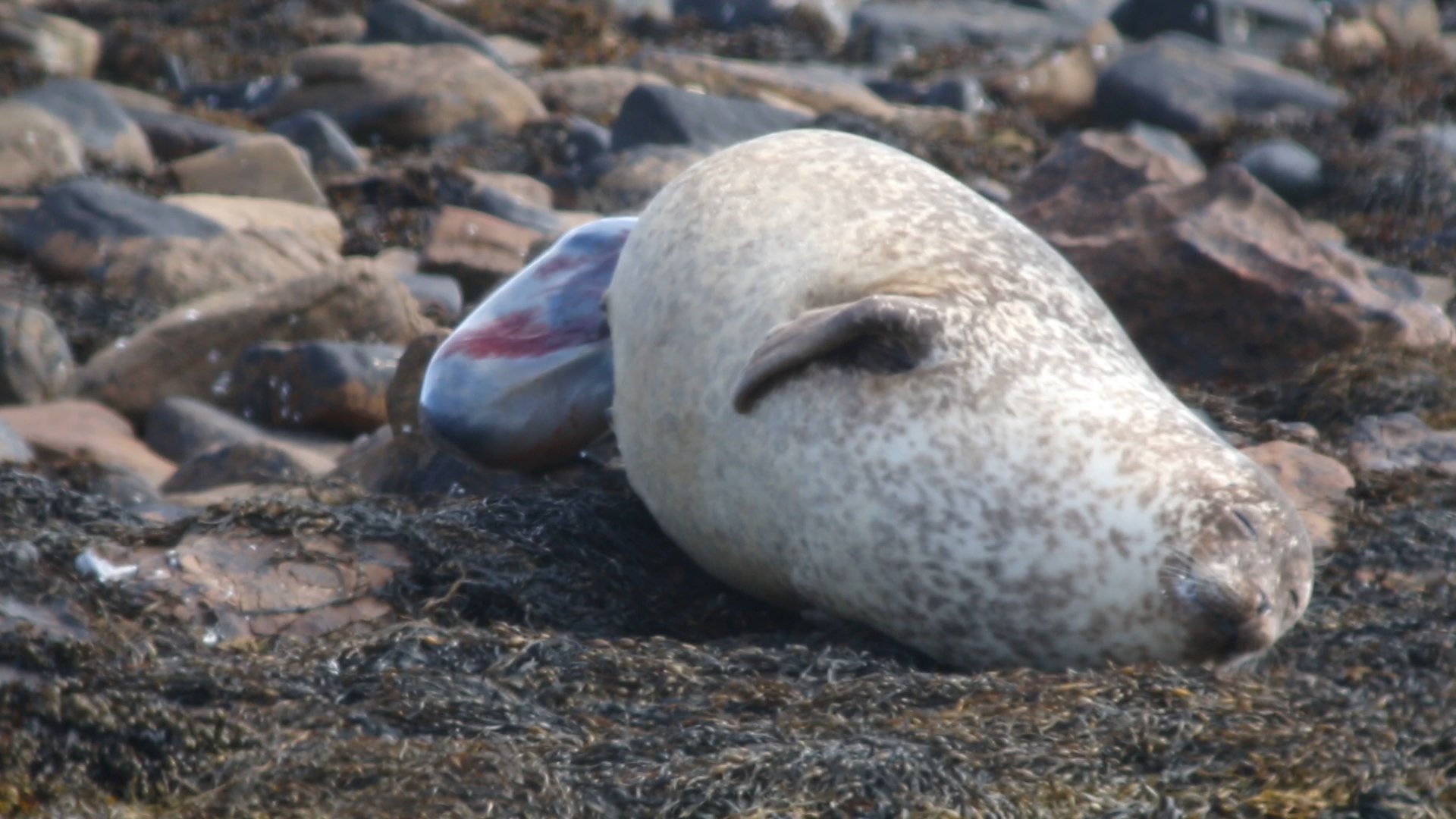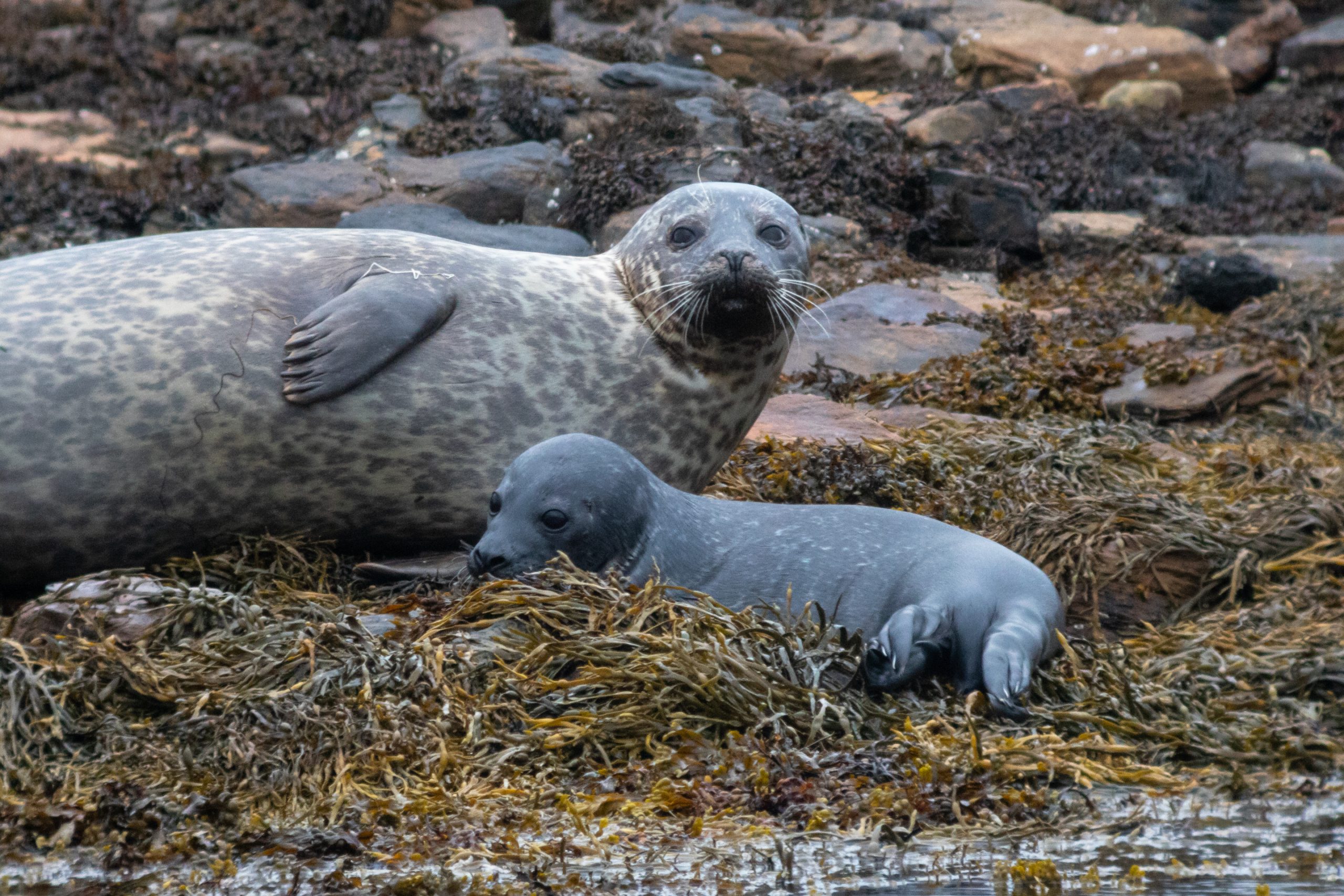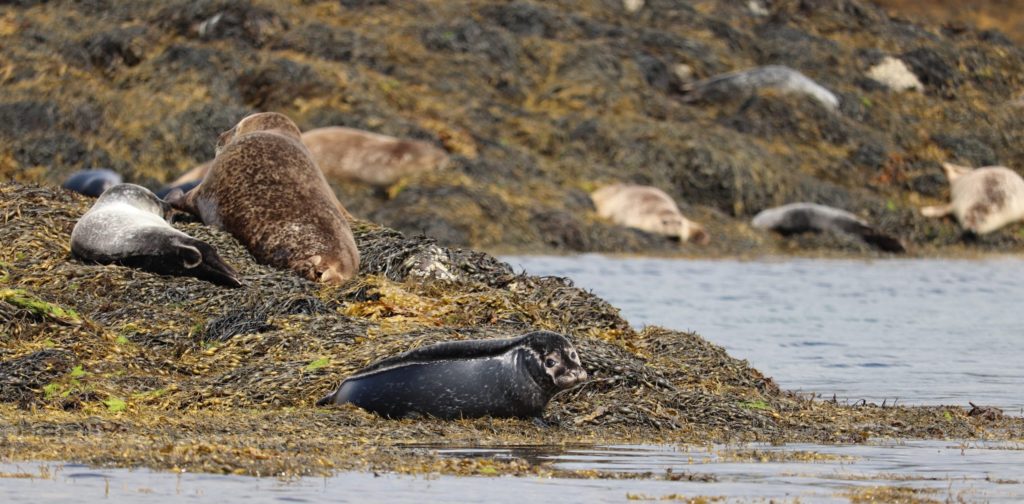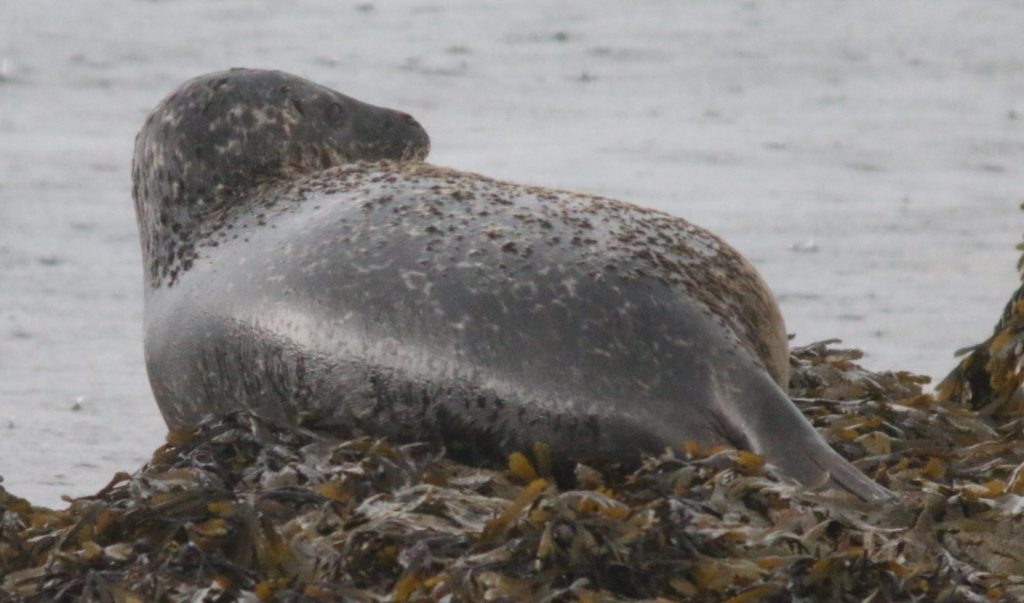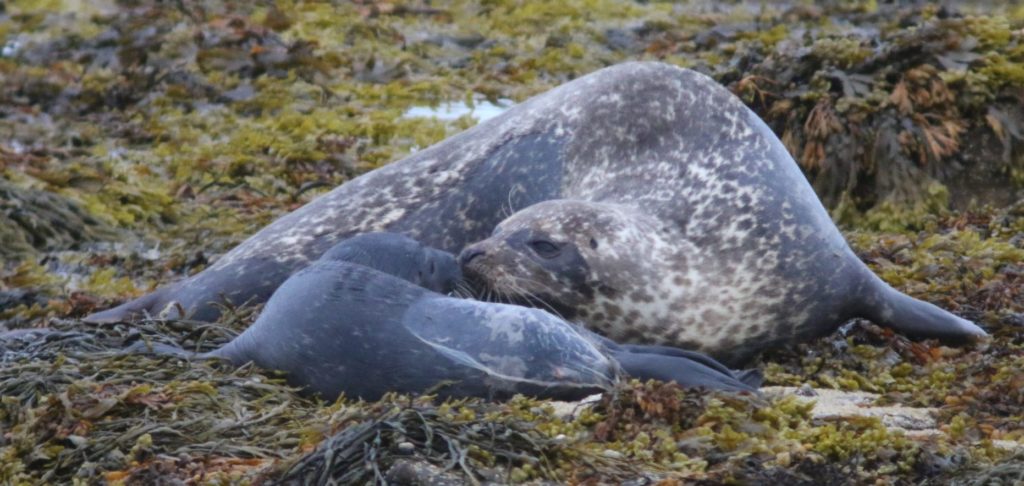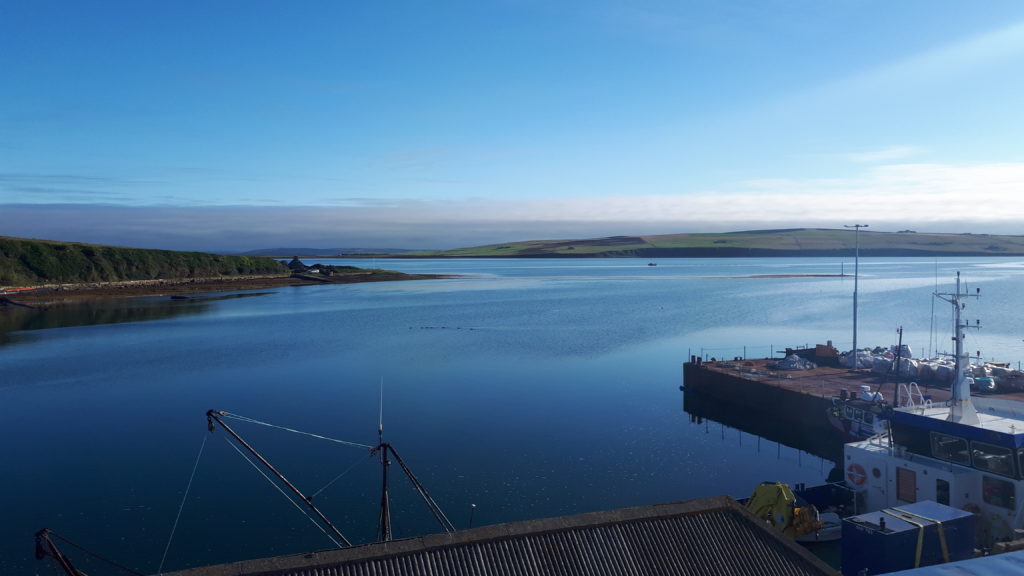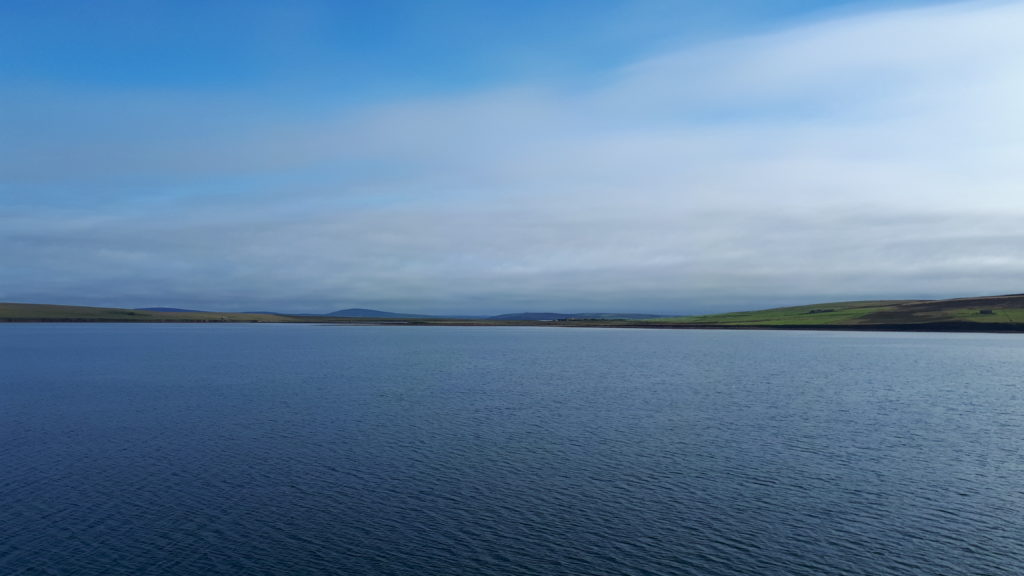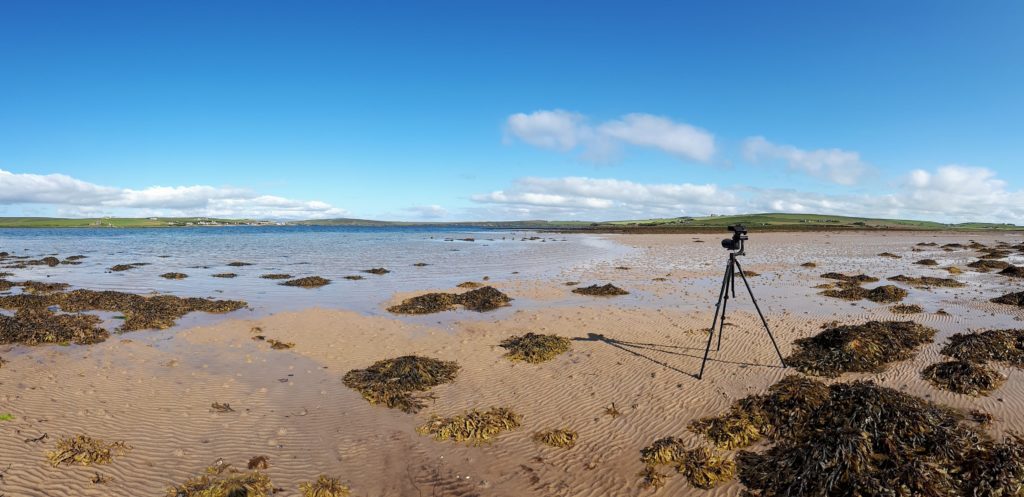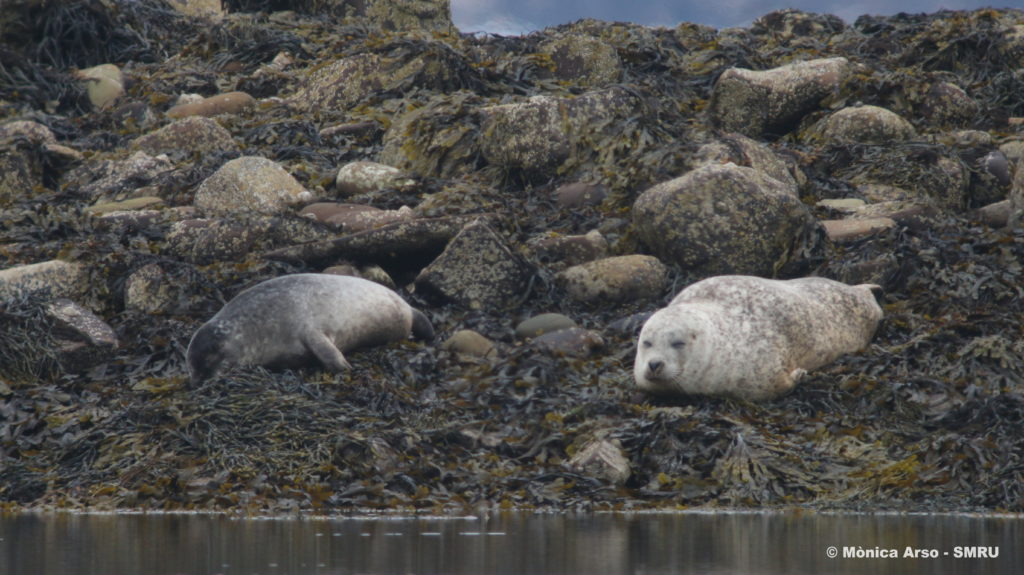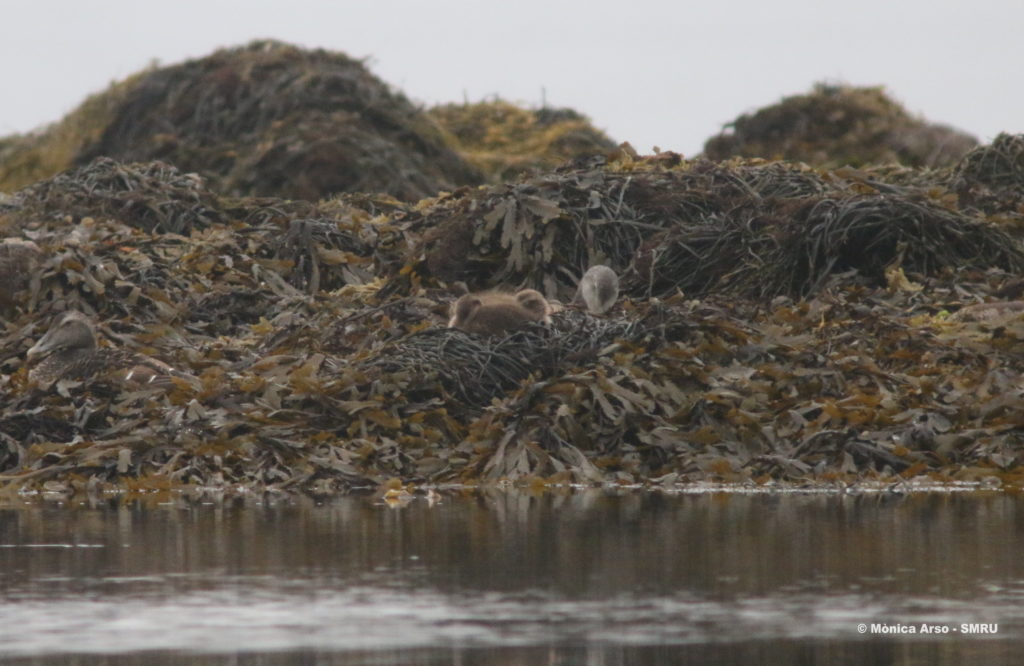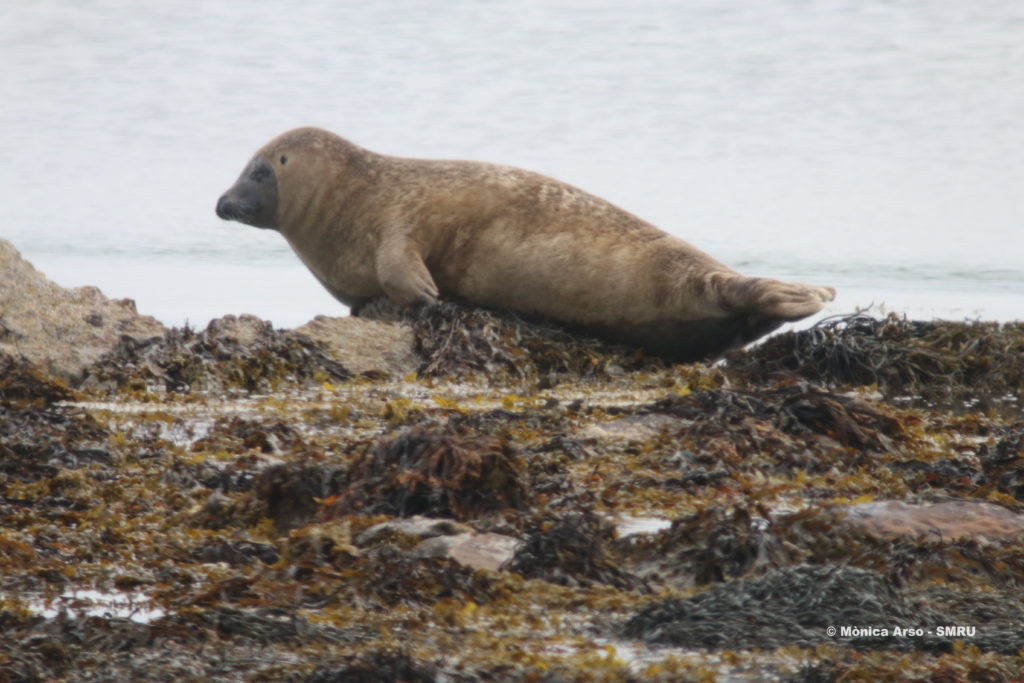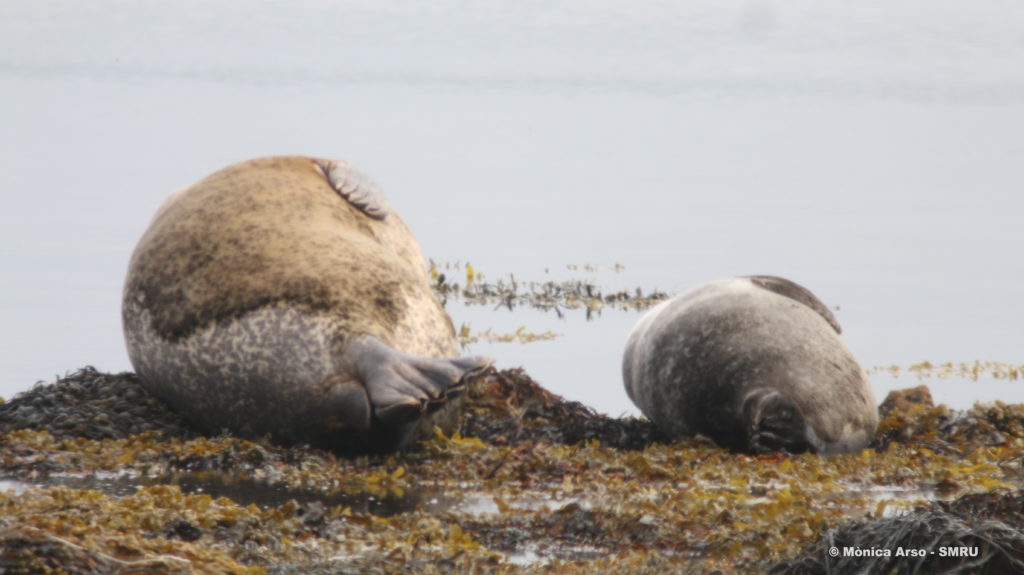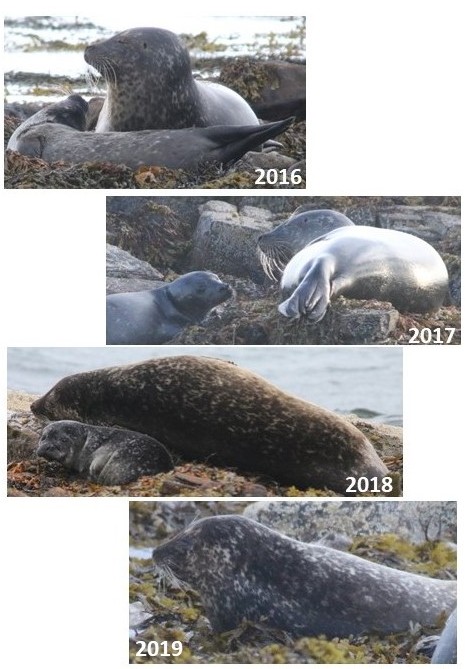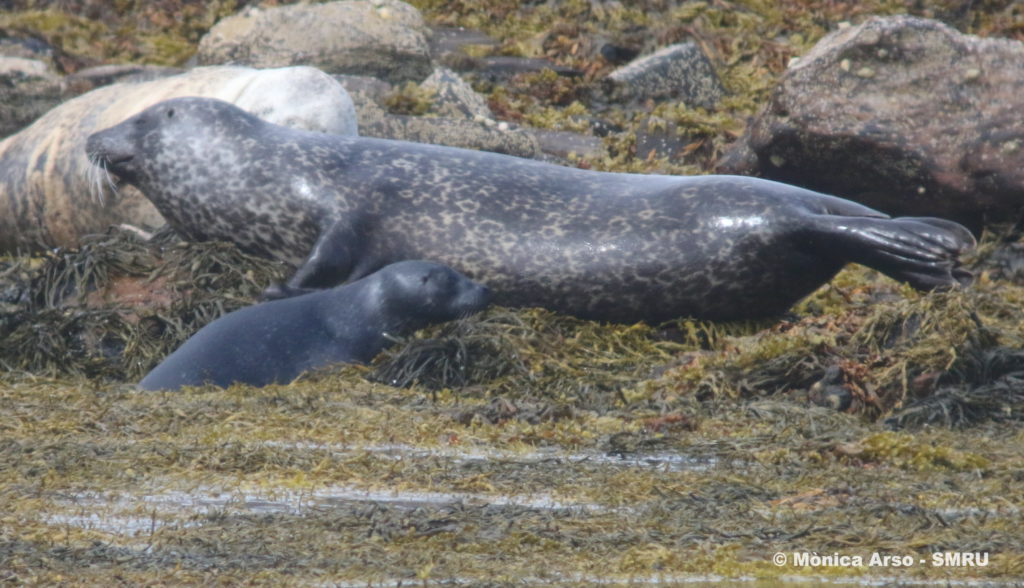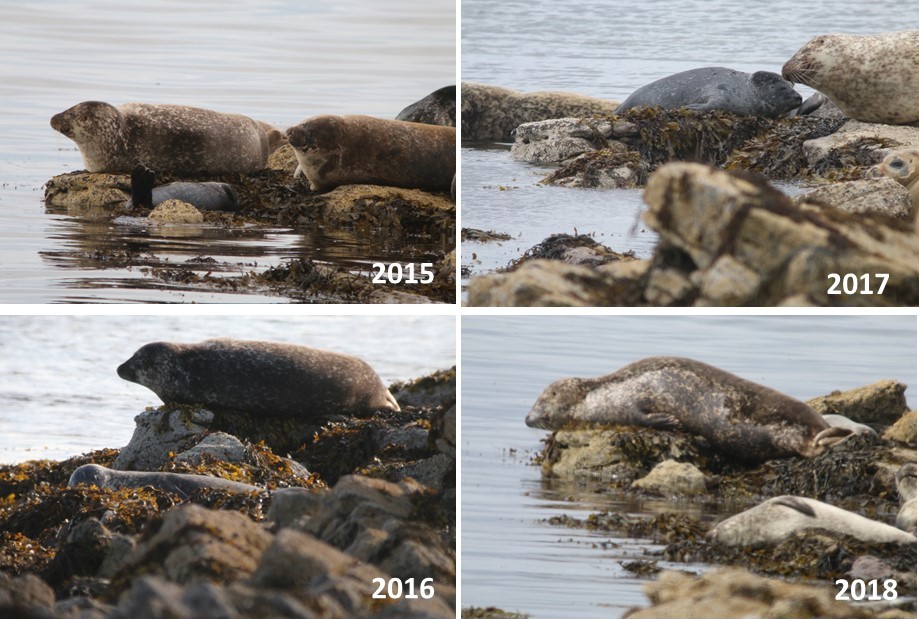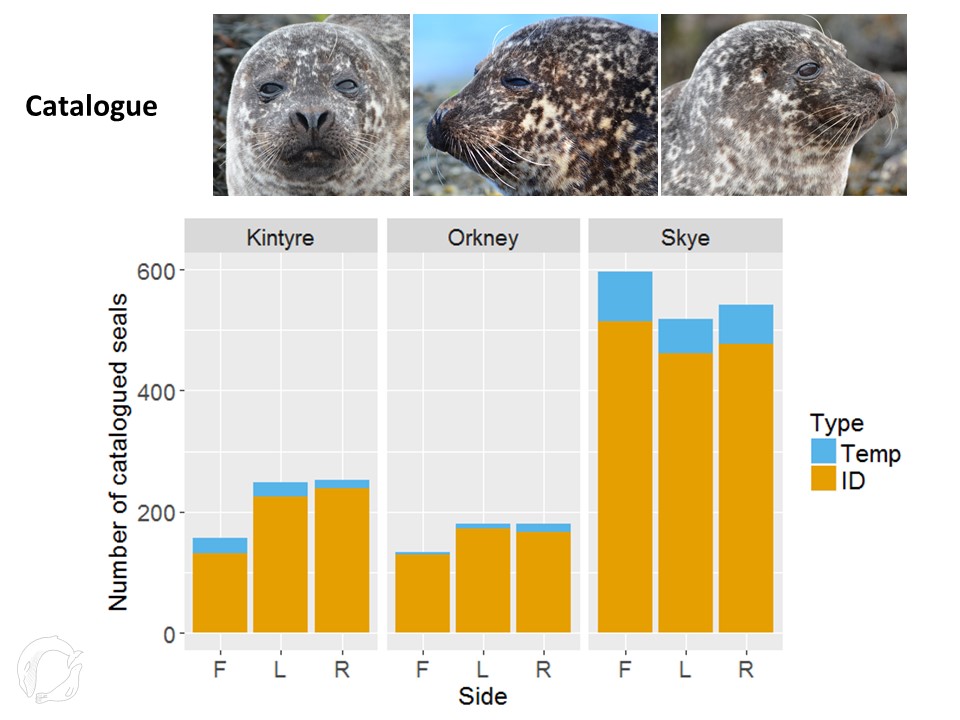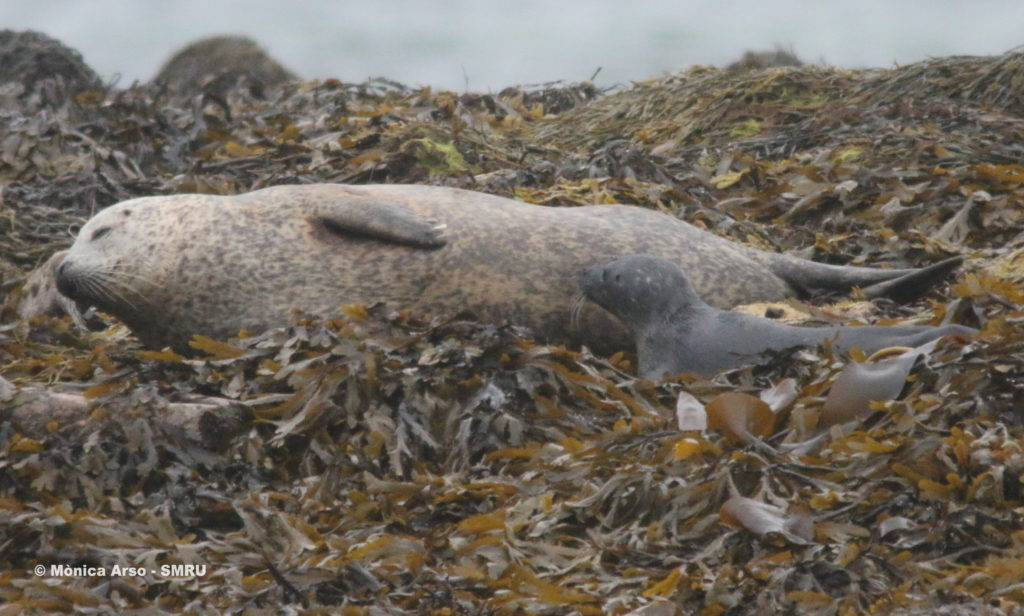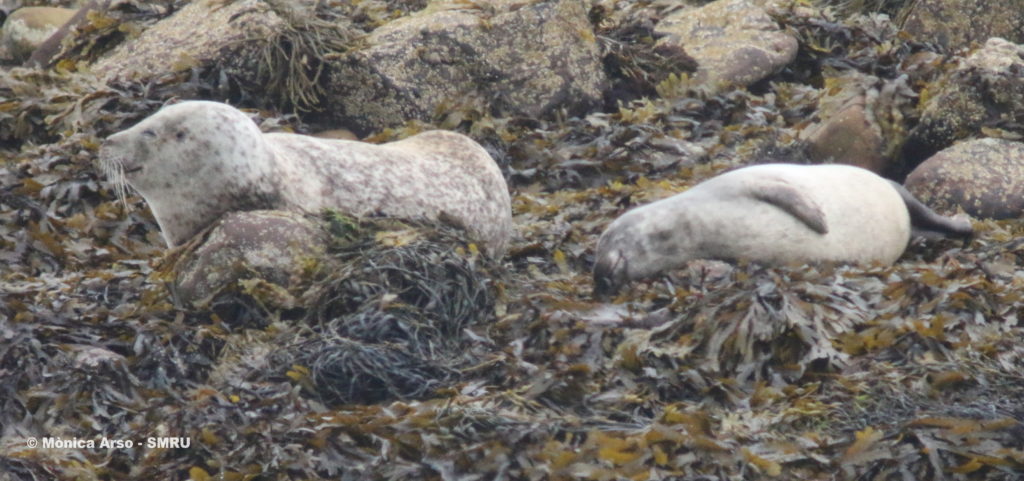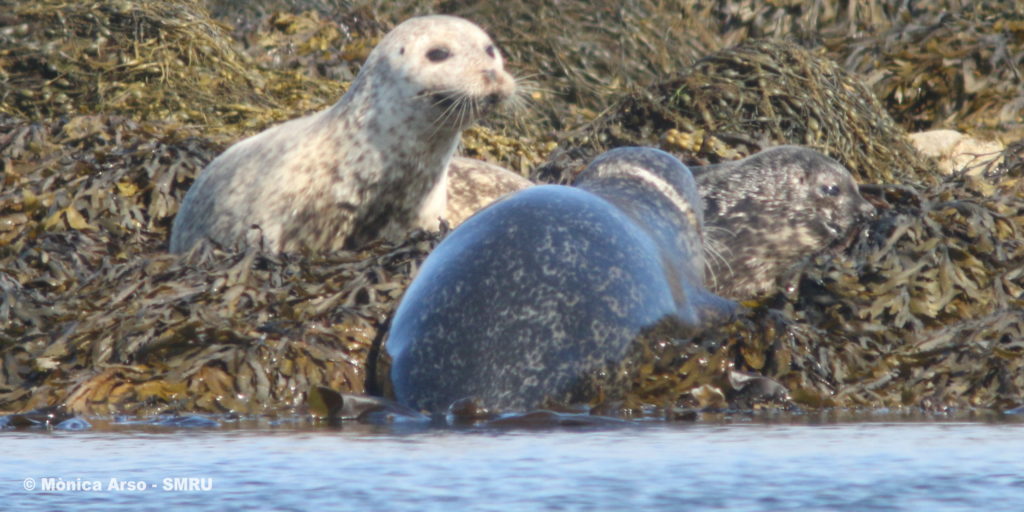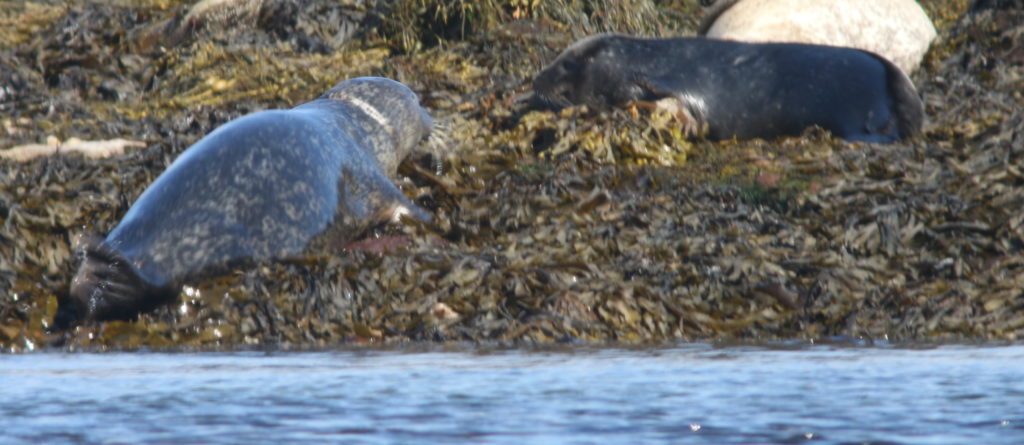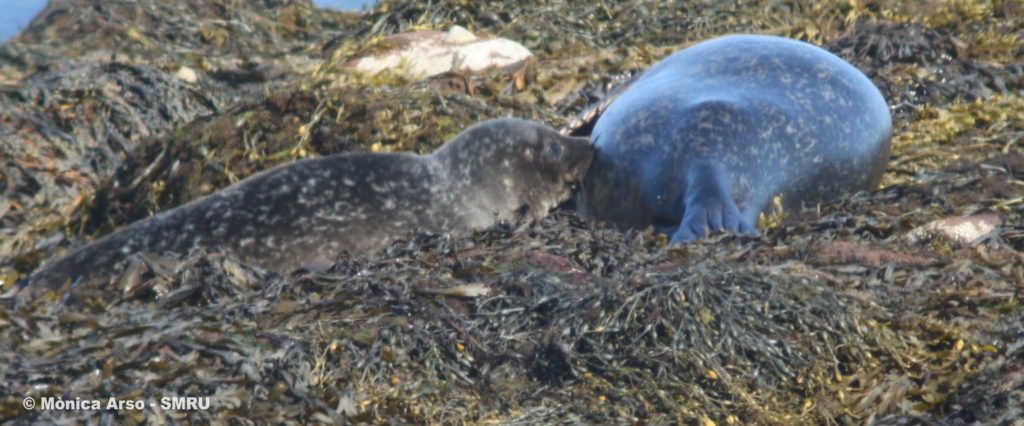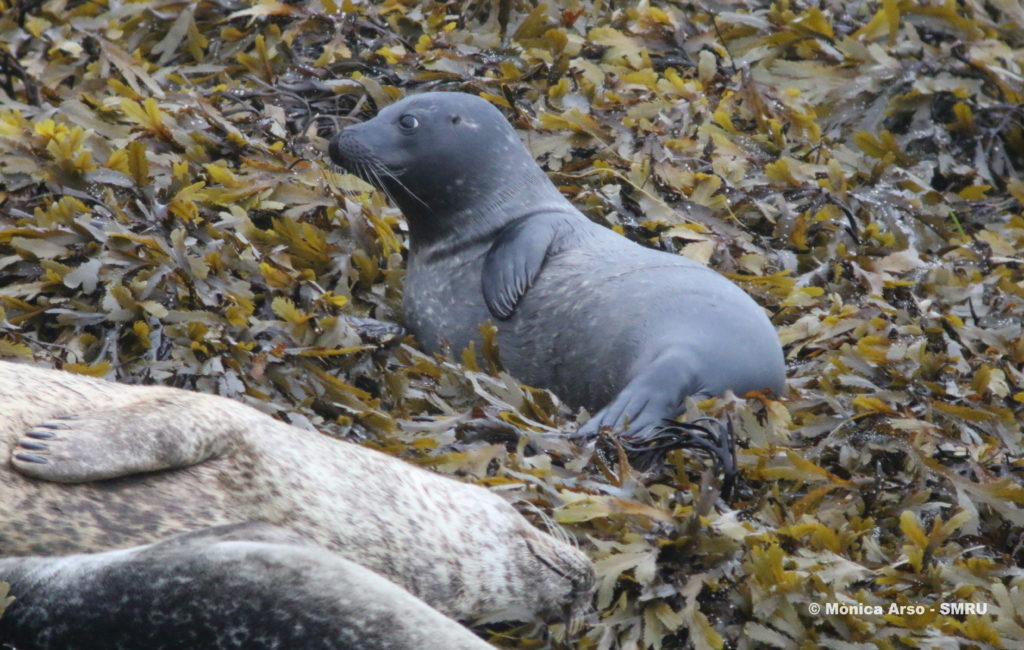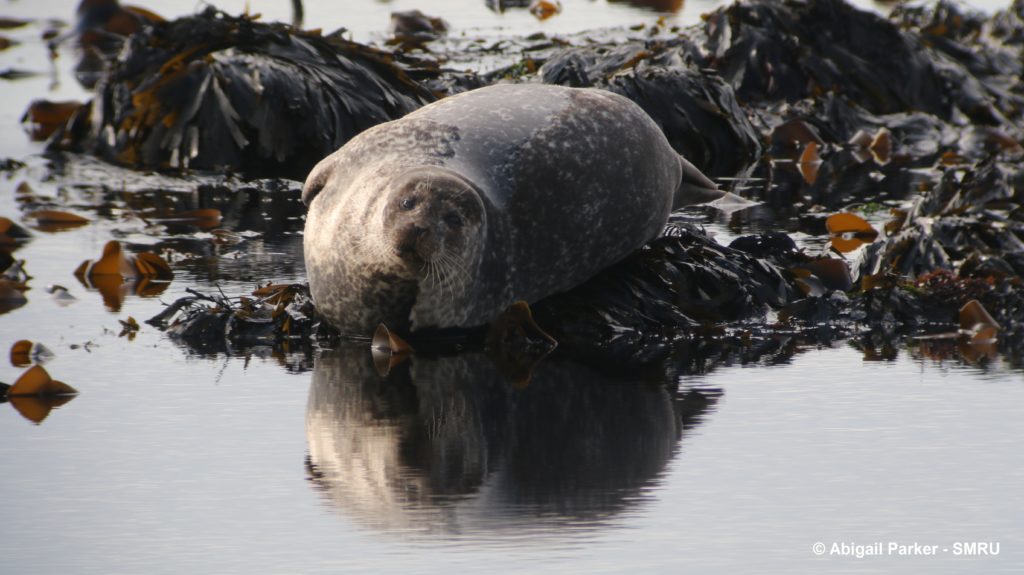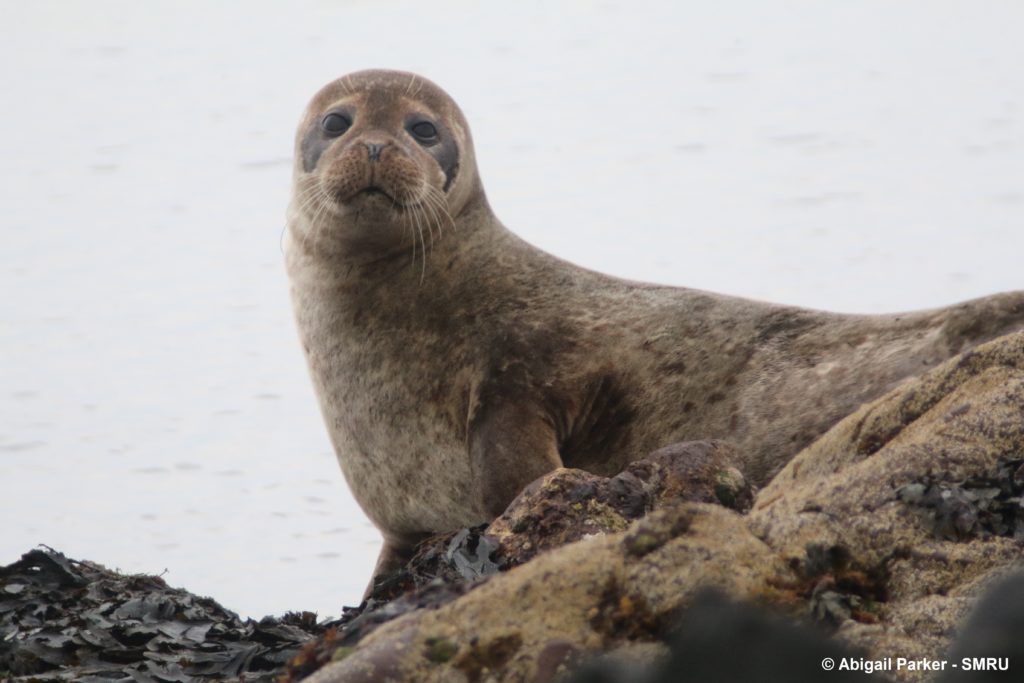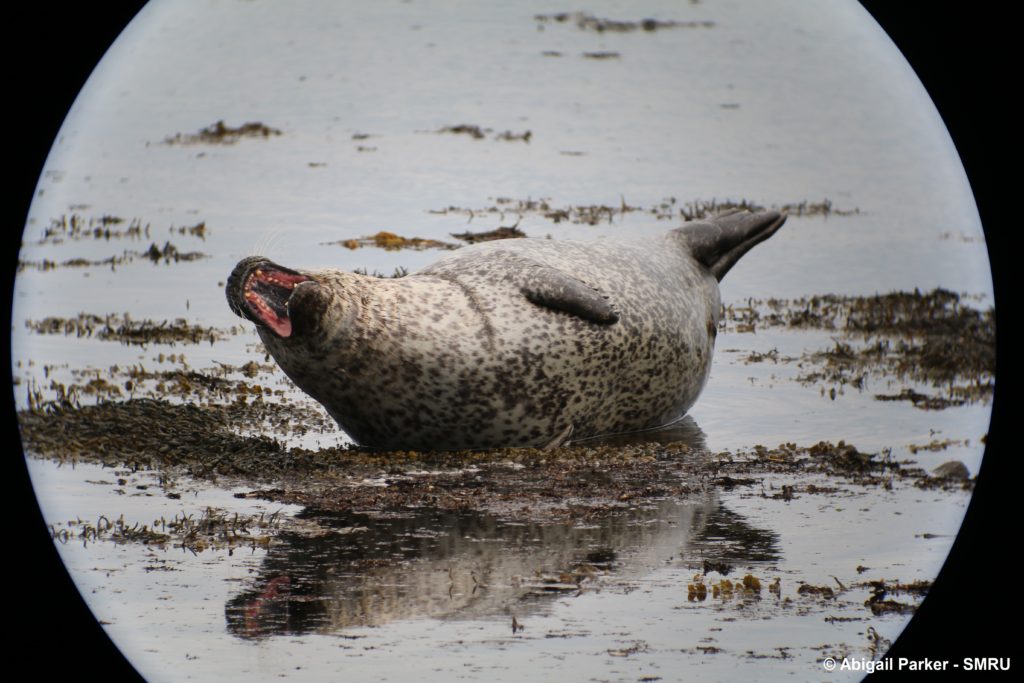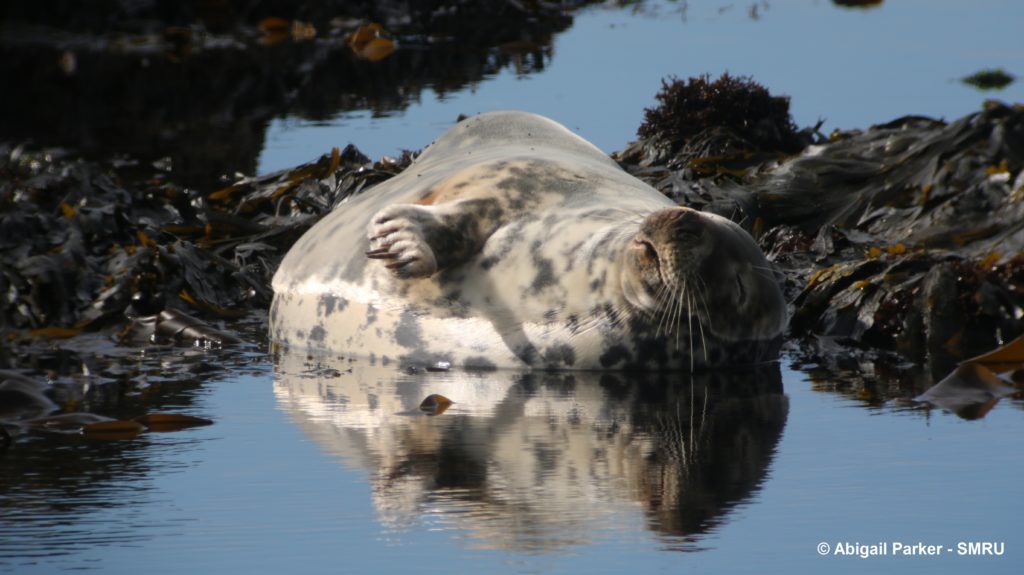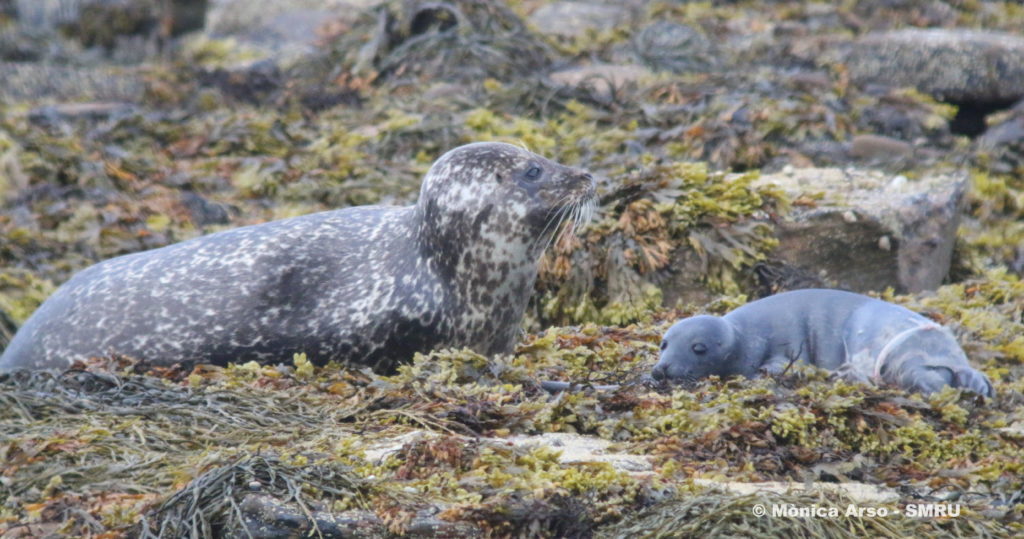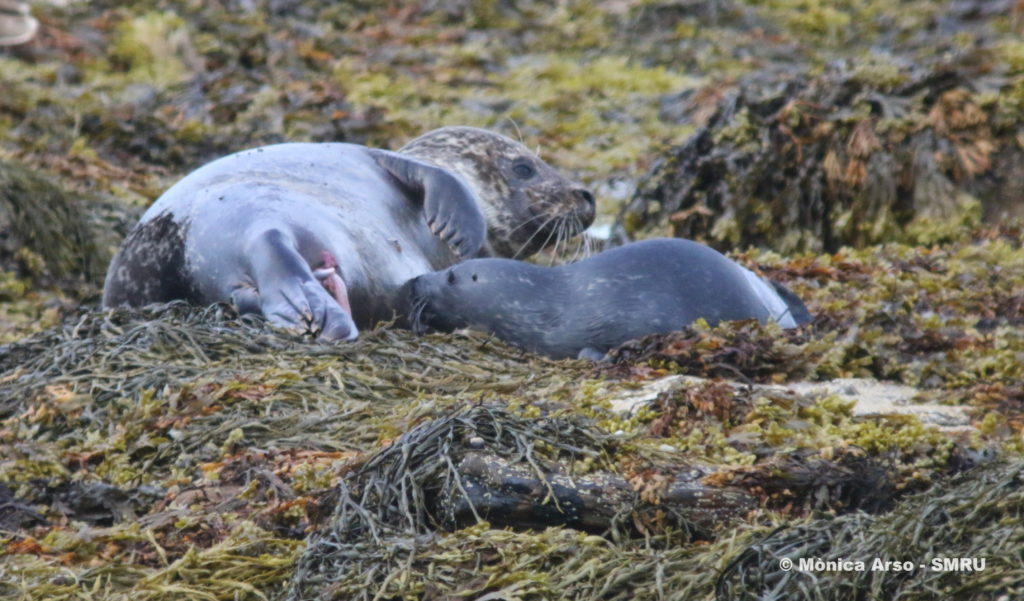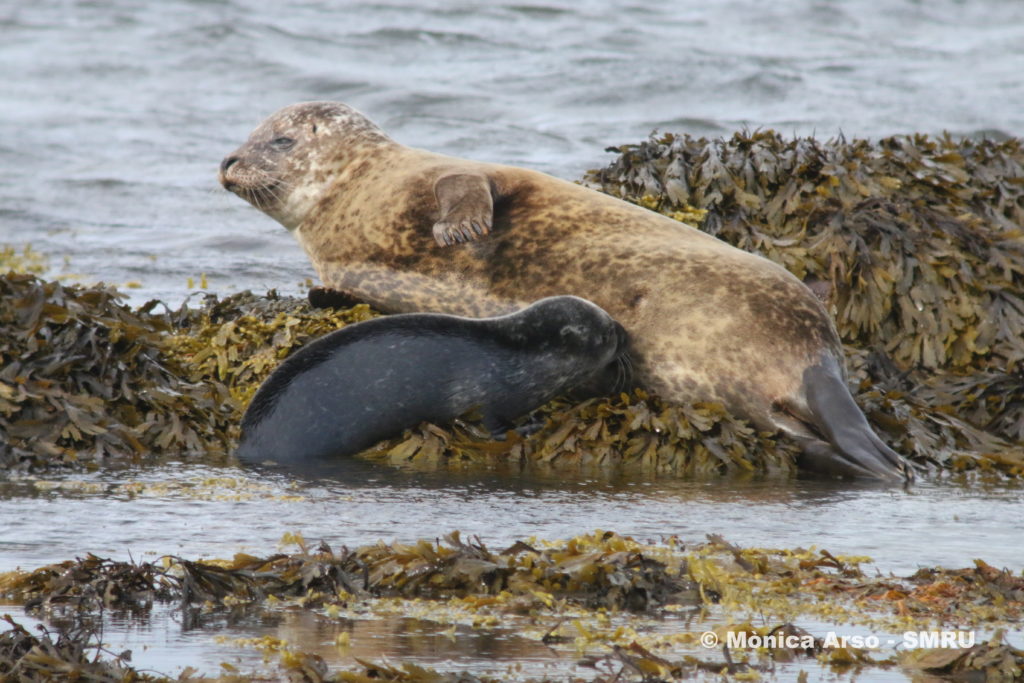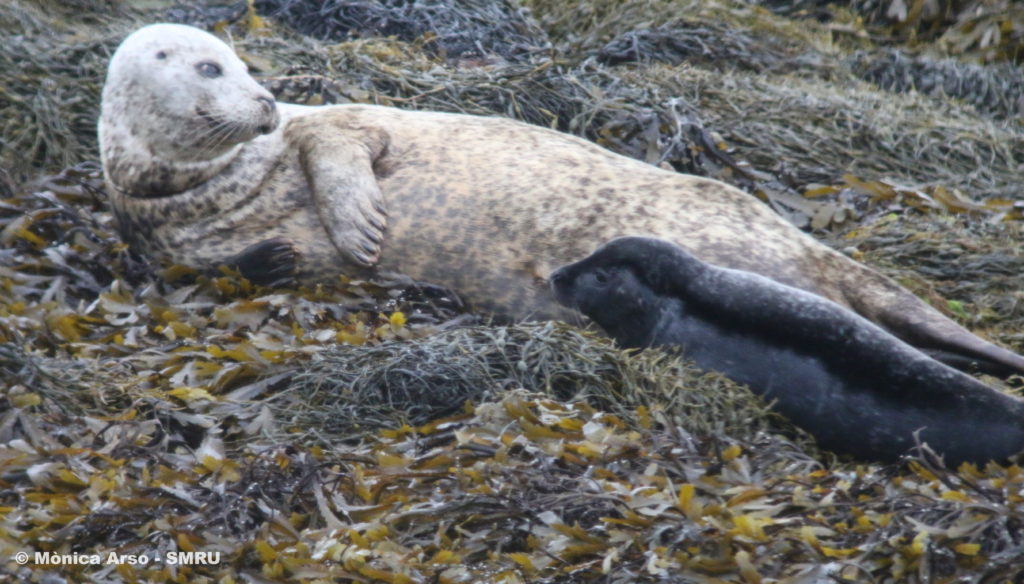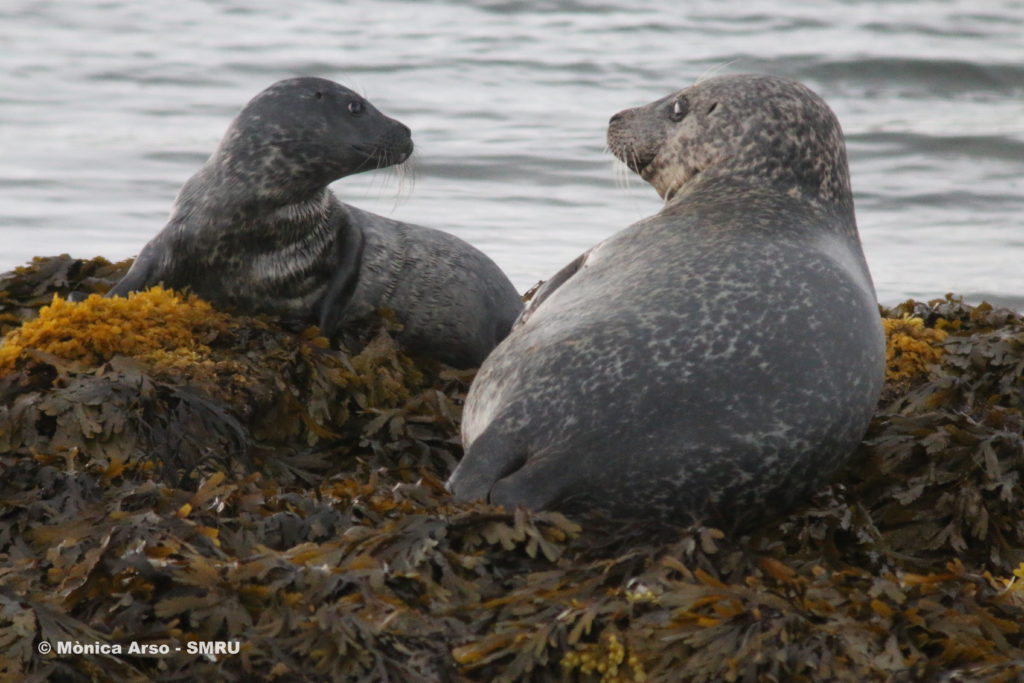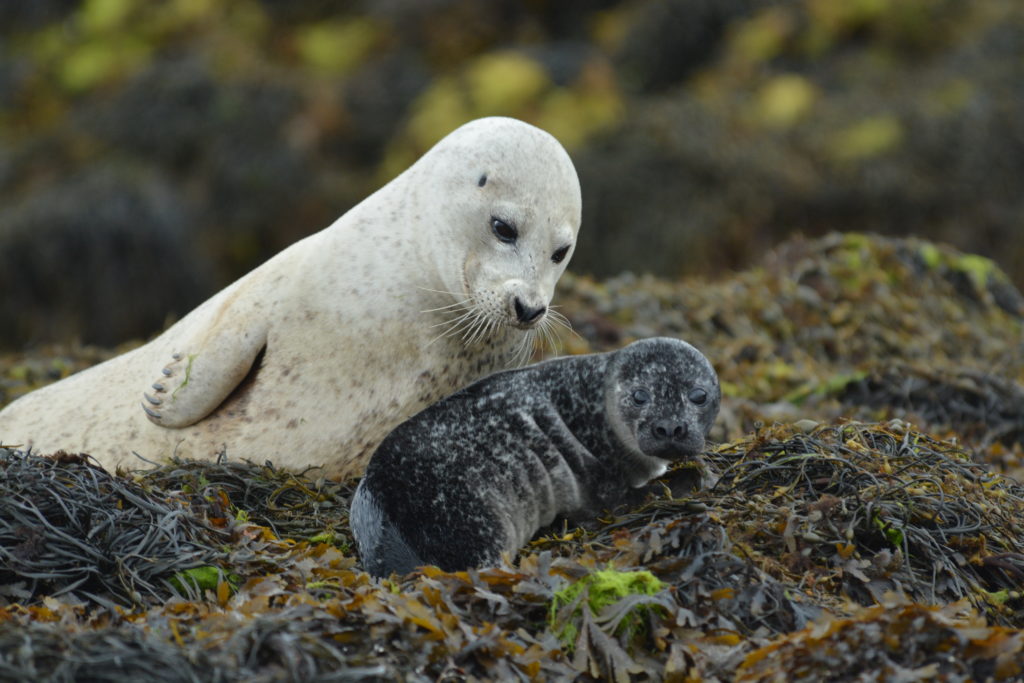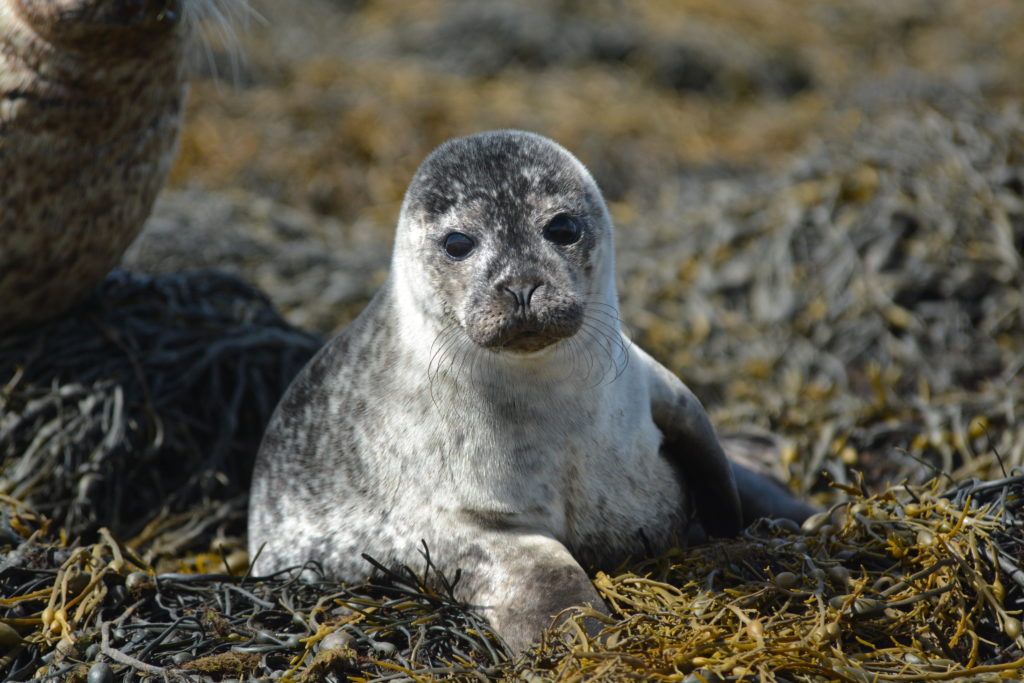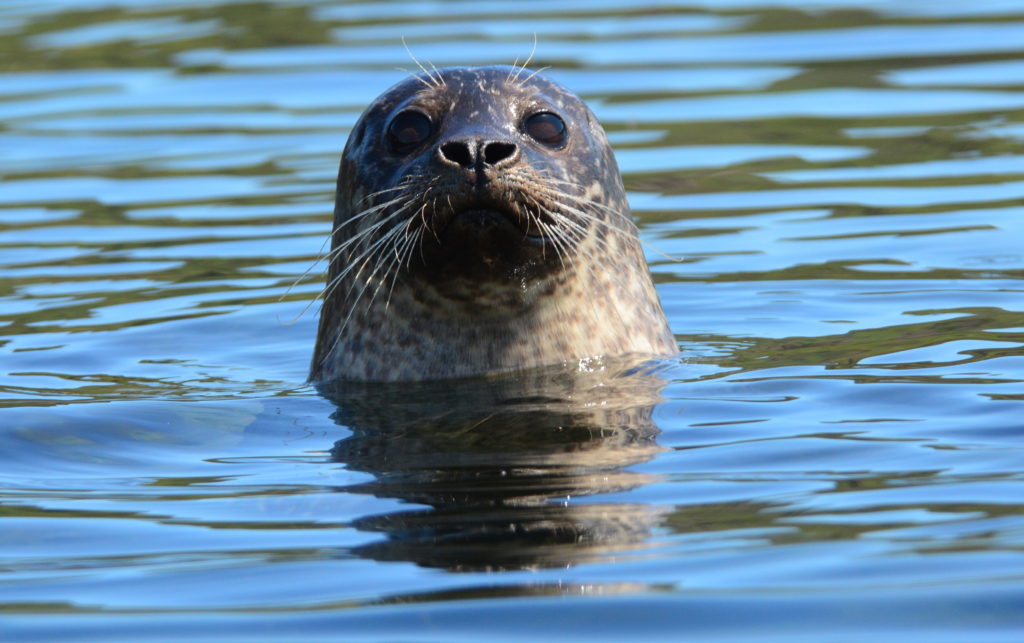I am back on the beautiful Isle of Skye and finding out first-hand why it is known as the Misty Isle! The weather has been incredibly challenging so far this year with very few nice or dry days. But armed with a new waterproof camera cover the weather is not stopping me from collecting the photo ID data, and harbour seal pupping season is in full swing! Tourism is back up and running at Dunvegan Castle and the seals are very used to the boats heading out to see them many times a day once again.
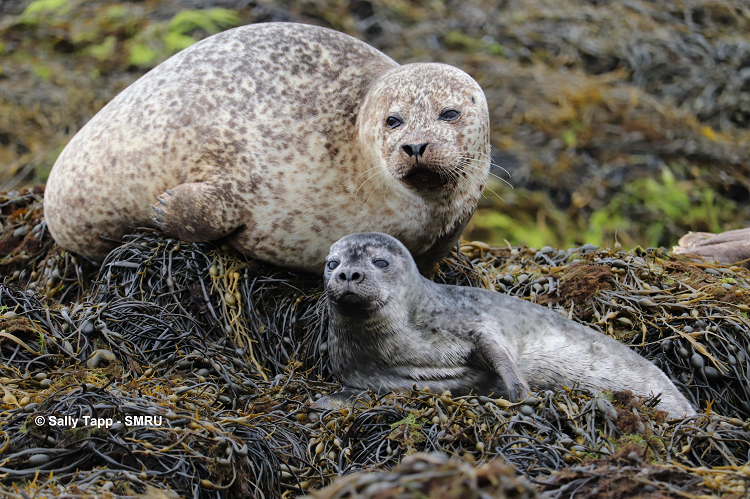
Our first Mum this year was spotted on the 16th June with her brand new pup. Identified as Sk394, this female has been recorded every year during fieldwork. Last year she was observed at the start of the season but not on any subsequent surveys and this year is the first time that we have seen her with a pup. Once Sk394’s little one arrived, the pups started appearing steadily, a few more each day, and the skerries here have been full of lots of heavily pregnant seals looking ready to pop!
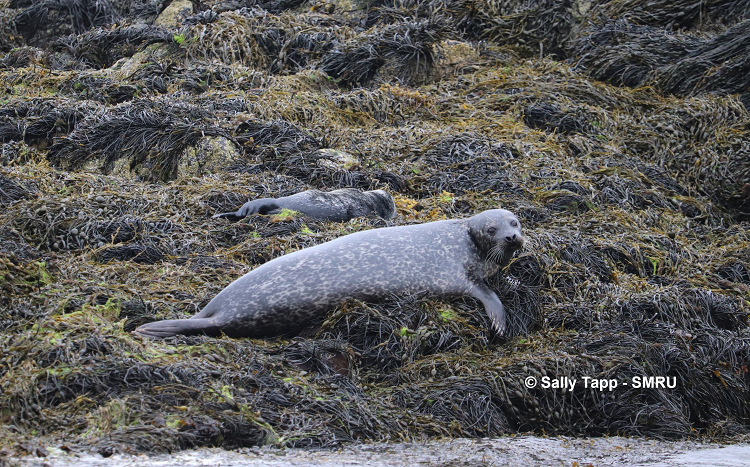
Another first for me this year was a pup born a few minutes before the boat rounded the corner. We quietly sat watching as the pup wriggled its way out of the birth sack with the help of its mother, whilst two large black-backed gulls feasted on the afterbirth. Due to the nature of the data collection here, a quick snapshot as you slowly coast past in the boat, it’s not often that you get the chance to see an actual birth so this was a very exciting moment.

The biggest difference this year for me is how many of the seals I now immediately recognise and can name as I encounter them on the skerries. Having spent the whole of last year looking at their faces every day on the computer it definitely feels like I am meeting up with some old friends and will also make the identification process much faster and smoother once fieldwork is completed.
Recognising them has also led to some other interesting observations. Some of the seals are so predictable that each day before we set off I can anticipate where they will be hauled out at their ‘favourite’ spot. A particular island they favour and even a specific rock on that island on which they can regularly be found. Sk895 is a young male who moves between two very specific haulout locations. A small outer island at the edge of the survey area (shown below in the pictures) and a larger island directly across from this one. Over the last two years I have only ever seen him in one of these two locations, and he is not alone in his preference for a particular spot. There are many other seals who can be located just as predictably.
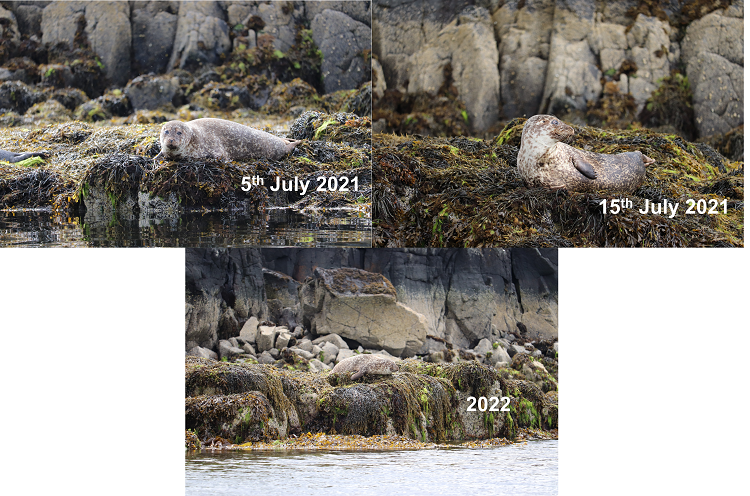
Another interesting observation is the differences in behaviour of individual seals to the boat approaching. Some of the seals are incredibly relaxed and indifferent to both the approach of the boat and the gazing tourists as they take photographs, and barely even lift their head to see what is happening. This can make my job of getting good photo ID shots a bit difficult as I only have a few moments to ideally capture them from the front and both left and right sides. In contrast, other seals are wary of the boat, despite the fact that it approaches them a number of times throughout the day. They will always keep a watchful eye on the boat until it departs. From the seals that I recognise, this behaviour appears to be relatively consistent with individual seals and affects the behaviour of the pups too as they tend to adopt the same reaction as their mother, learning from her behaviour.
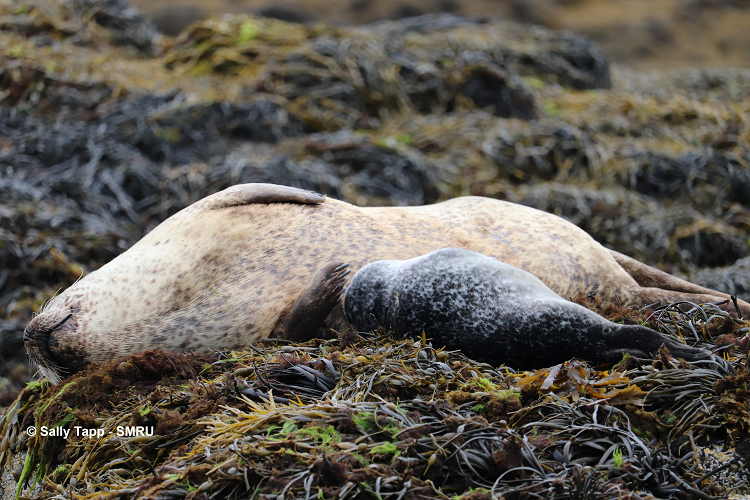
One of the most recognisable seals here in Loch Dunvegan is Sk105 or Morag. She has a very distinctive ‘orange’ head and is somewhat of a celebrity seal in the area. Unfortunately, she did not appear during the pupping season in 2021, therefore I have never actually seen her. So, when this female turned up heavily pregnant this year my initial thought was “Oooo Morag is back!” However, after comparing the photos of this seal to those of Morag in the catalogue, it appears that this is a new ‘orange’ seal!

Just like Morag, she is very distinctive and stands out amongst all the other seals with her orange head making her instantly recognisable. However, this newly observed seal is a lighter shade of orange. She has been spotted regularly on surveys this season and has now given birth to a pup. I am reliably informed by a skipper who has been observing Morag for over 30 years now that I would not be able to miss her if she turned up and I remain hopeful that she will make an appearance before the end of the season so that I get a chance to see her. This newly recorded orange seal will be added to the catalogue with a new ID number later in the year.
All new seals in any given year that have not been matched to an existing seal in the catalogue, are given an individual ID number. However, due to the nature of the matching process, and the number of seals we currently have in the Skye catalogue, seals can sometimes be accidentally assigned two ID numbers resulting in what we call duplicates. Therefore, we are constantly looking to identify any duplicates and remove them from the catalogue. Once an ID number has been used it cannot be reused for another seal and consequently earlier in the year we reached a milestone with the Skye seal catalogue. Our new additions to the catalogue from the 2021 field season took us to over 1000 ID numbers assigned during the course of the project. Alongside the new orange seal, I wonder how many new seals I will record this year?!

I am looking forward to another couple of weeks on the Misty Isle with lots more mum-pup pairs to record, many familiar faces to recognise and I am eternally optimistic that the weather will improve!
For now, goodbye from Skye,
Sally

